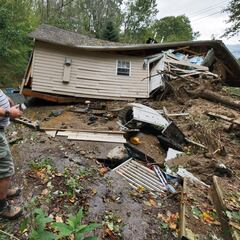Planetary defense: Can nuclear bombs save Earth from asteroids?
The chances of an asteroid hitting Earth are small, but the damage such an event could cause would be massive. Can nuclear bombs help avert disaster?

Planetary defense is a crucial issue for space organizations such as NASA, since the impact of a large asteroid could result in a global extinction event. One of the proposed solutions to prevent a possible collision is the use of nuclear devices, specifically nuclear bombs. The idea is to use the X-rays caused by a nuclear explosion to divert the trajectory of the celestial body and prevent it from hitting the planet.
How nuclear devices could help defend the planet from asteroids
ScienceNews reports this solution appears to be feasible. A new study published in the journal Nature Physics presents interesting findings from several experiments and computer simulations. By heating the surface of asteroids using X-rays, these objects drastically change their trajectory. Additional tests showed the X-ray radiation emitted by the detonation of a nuclear device could deflect the trajectory of asteroids several miles in size.

READ ALSO: How to help Hurricane Helene victims
“There is only one proposed method that delivers enough energy to dramatically alter the trajectory of clearly threatening asteroids, ones of enormous size, or even small asteroids in cases where the response time is short. The consensus in the planetary defense community is that X-rays from the detonation of a nuclear device are the only viable option in these cases,” said physicist Nathan Moore, based at Sandia National Laboratories in Albuquerque, New Mexico.
The plan does not involve a direct impact of the nuclear device against the asteroid, but rather a remote detonation that uses radiation to divert it from its original trajectory. This approach has several clear advantages.
First, the precision of the operation is greatly improved by not depending on intercepting a moving object. Second, such controlled detonations can be carried out far enough from our planet that we do not have to worry about radiation or other possible adverse effects, such as damage to the ozone layer.

The Earth is bombarded daily by thousands of small meteorites and other celestial bodies that simply break down due to friction as they pass through the ozone layer. However, when one of these objects is of sufficient mass and size, it is possible for it to pass through our planet’s natural defensive measures without significant damage, which could result in an impact against the Earth’s surface that would cause incalculable damage to the biosphere.
READ ALSO: How to report power outages and check service restoration
Other methods NASA has tried to defend the planet from meteorites
In 2022, NASA intentionally caused a spacecraft to collide with the asteroid Dimorphos, altering the orbit of the celestial body. This was part of the DART mission, which was intended to test the space agency’s planetary defense capabilities.
Related stories
Although the operation was a success and the 3,000-ft.-long asteroid was successfully diverted, Moore says such interventions only work when there is a long response time and the meteorites are relatively small in size.
Although NASA has demonstrated that intercepting a moving object threatening the Earth is feasible, this method has detractors in the scientific community such as Moore, who argues it is more efficient and risk-free to detonate a nuclear device in space.


Complete your personal details to comment